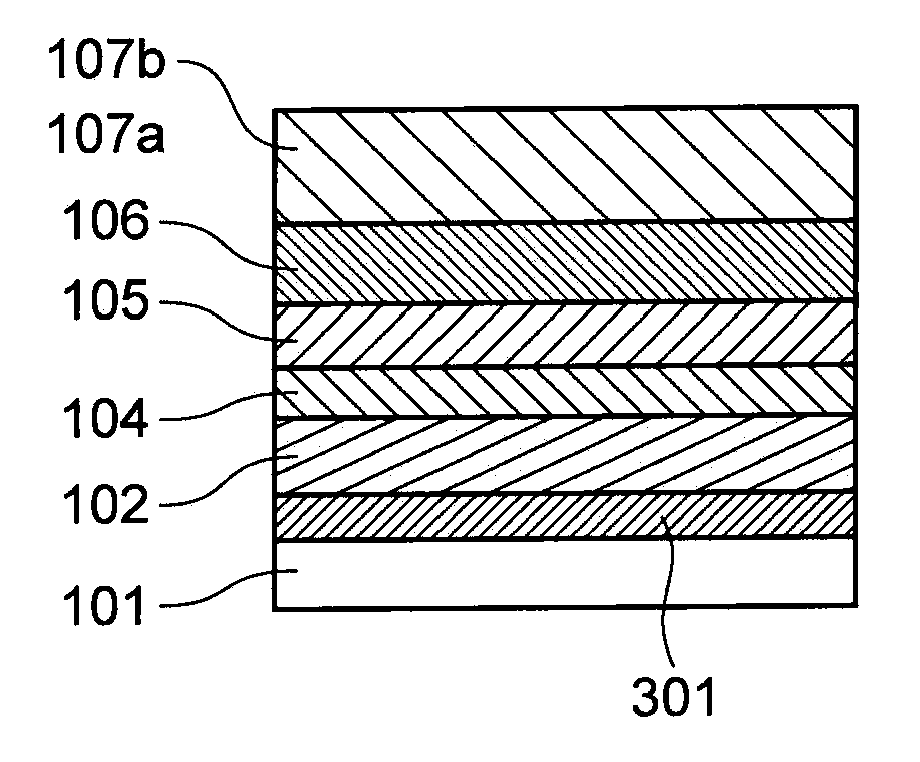Organic electroluminescence device
- Summary
- Abstract
- Description
- Claims
- Application Information
AI Technical Summary
Benefits of technology
Problems solved by technology
Method used
Image
Examples
example 1
[0087]On a glass substrate having a diagonal length of 1.8 inch as a light permeable substrate, an ITO (indium tin oxide) thin film was formed by a sputtering method, and the ITO film was patterned by a photolithography method and an etching method with an acid solution, thereby forming pixel electrodes. The line pattern of the pixel electrodes was a line width of 136 μm and a space of 30 μm, in which 192 lines were formed within a square of approximately 32 mm.
[0088]A partition wall was then formed in the following manner. A positive photosensitive polyimide (Photoneece DL-1000, produced by Toray Industries, Inc.) was spin-coated over the entire surface of the glass substrate having the pixel electrodes formed thereon. The condition of spin coating was rotation at 150 rpm for 5 seconds and then rotation at 500 rpm for 20 seconds per one time of coating, and the height of the partition wall was 1.5 μm. The photosensitive material coated on the entire surface was subjected to exposur...
example 2
[0096]In Example 2, the organic light emitting ink A and the organic light emitting ink B were mixed at a weight ratio of 80 / 20 to prepare a mixed ink II. A light emitting layer was printed by a relief printing method immediately on the pixel electrodes surrounded by the partition wall according to the line pattern thereof. The thickness of the light emitting layer after printing and drying was 100 nm. The other conditions were the same as in Example 1. On driving the resulting organic EL display panel, it exhibited a luminance of 600 cd / cm2 and a CIE chromaticity of x=0.31 and y=0.63 at a driving voltage of 7 V, and the service life at an initial luminance of 1,000 cd / m2 was 250 hours.
PUM
| Property | Measurement | Unit |
|---|---|---|
| Percent by mass | aaaaa | aaaaa |
| Area | aaaaa | aaaaa |
| Hole mobility | aaaaa | aaaaa |
Abstract
Description
Claims
Application Information
 Login to View More
Login to View More - R&D
- Intellectual Property
- Life Sciences
- Materials
- Tech Scout
- Unparalleled Data Quality
- Higher Quality Content
- 60% Fewer Hallucinations
Browse by: Latest US Patents, China's latest patents, Technical Efficacy Thesaurus, Application Domain, Technology Topic, Popular Technical Reports.
© 2025 PatSnap. All rights reserved.Legal|Privacy policy|Modern Slavery Act Transparency Statement|Sitemap|About US| Contact US: help@patsnap.com



